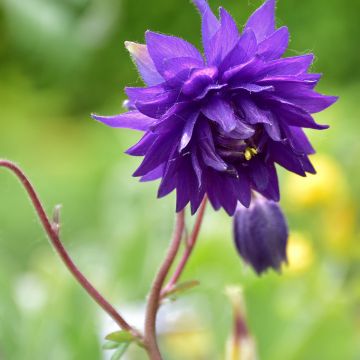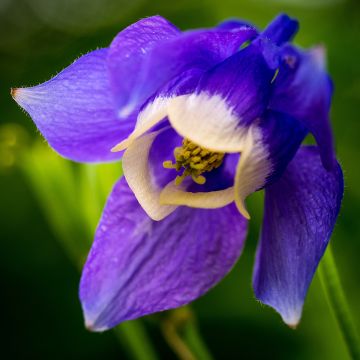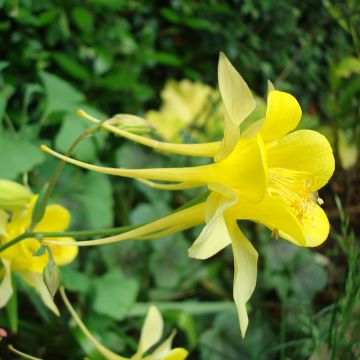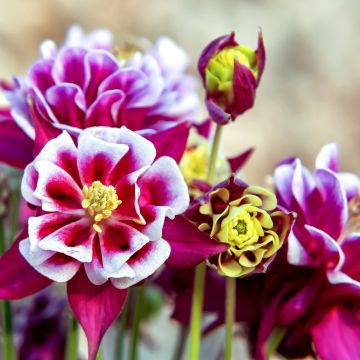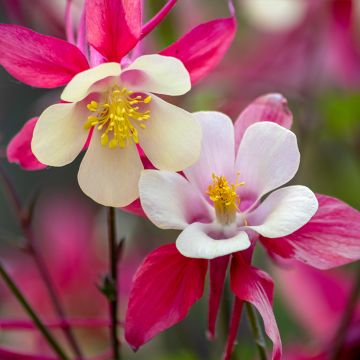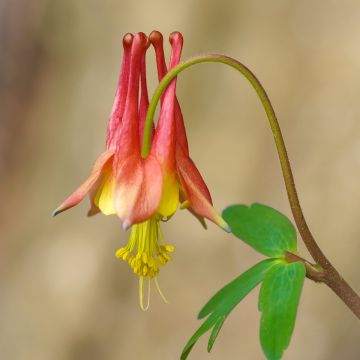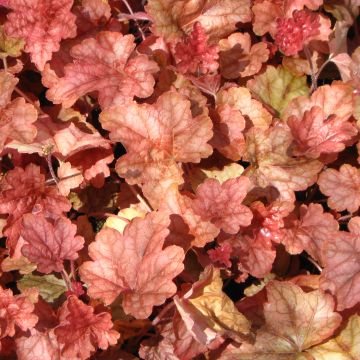

Aquilegia vulgaris var. stellata White Barlow - Columbine


Aquilegia vulgaris var. stellata White Barlow - Columbine
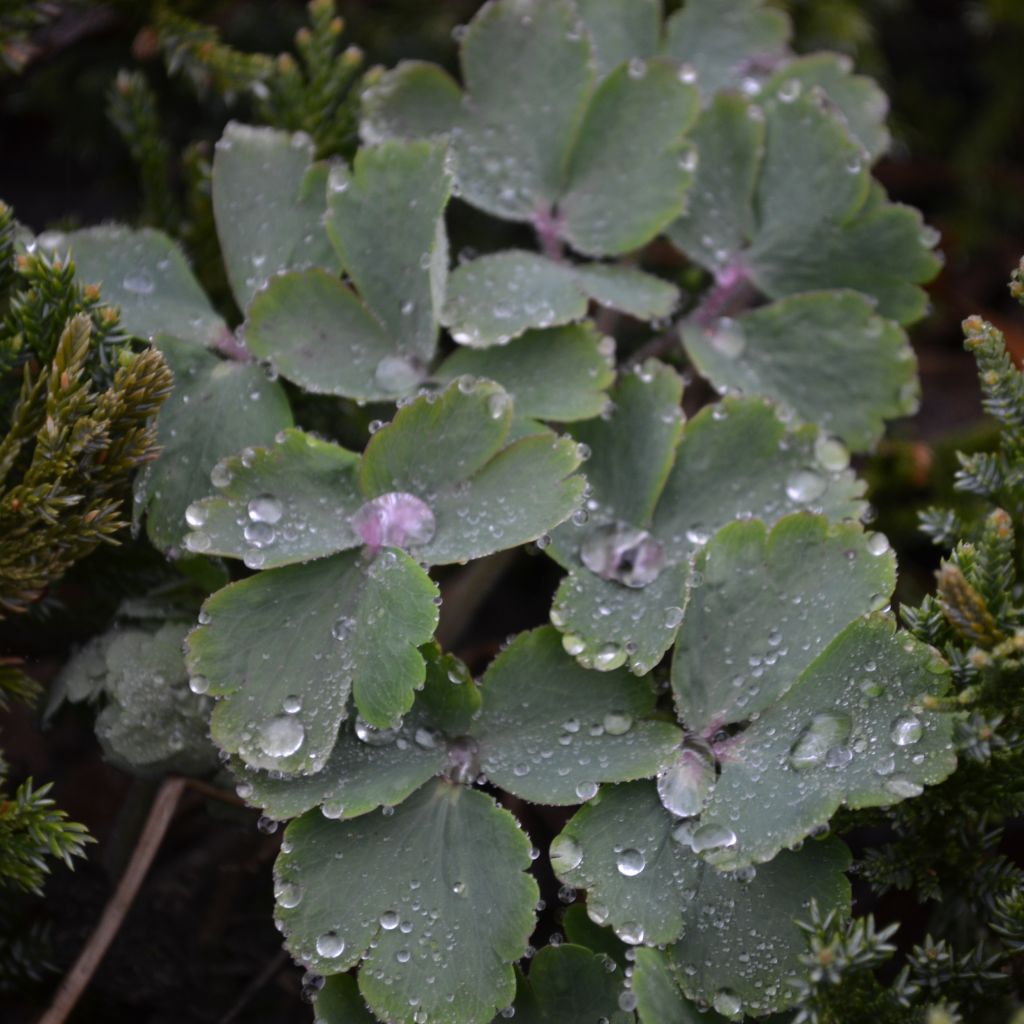

Aquilegia vulgaris var. stellata White Barlow - Columbine
Aquilegia vulgaris var. stellata White Barlow - Columbine
Aquilegia vulgaris var. stellata White Barlow
European Columbine, Common Columbine, Granny's Nightcap, Granny's Bonnet
Young plant received in perfect condition on D+2. Congratulations to the entire team at Promise of Flowers!
Edith, 07/05/2021
This item cannot be shipped to the selected country
Delivery charge from €5.90
More information
Schedule delivery date,
and select date in basket
This plant carries a 12 months recovery warranty
More information
We guarantee the quality of our plants for a full growing cycle, and will replace at our expense any plant that fails to recover under normal climatic and planting conditions.
From €5.90 for pickup delivery and €6.90 for home delivery
Express home delivery from €8.90.
Does this plant fit my garden?
Set up your Plantfit profile →
Description
Aquilegia vulgaris var.stellata White Barlow, also known as columbine, displays a prolific flowering of fluffy, spurless, pure white blooms in early summer, emerging from its lovely grey-green delicate foliage at the tips of slender stems. It is a graceful perennial plant, easy to cultivate, suitable for both borders and rock gardens.
The White Barlow columbine belongs to the Ranunculaceae family. It is a cultivar derived from Aquilegia vulgaris, native to Europe, which has given rise to numerous hybrids appreciated for their delicate foliage and abundant flowering. Columbines have been grown in gardens for centuries and are among the most popular perennial plants. The 'White Barlow' cultivar forms a dense clump of foliage from spring, measuring 40 cm (16in) in all directions. It produces 2 to 3 cm (1in) in diameter, delicately nodding, fully double pure white flowers, surrounded by greenish sepals. This columbine will brighten up your garden from May to July. The stiff, highly branched stems bear 5 to 15 flowers at their tips. The foliage is grey-green, rounded, and often divided into two or three lobes. When in bloom, it reaches a height of 70 cm (28in) and self-seeds in various locations, filling in neglected corners avoided by other plants. This plant has a taproot, and it doesn't tolerate transplanting very well.
Blooming in late spring or early summer, the generous clumps of White Barlow Aquilegia make a beautiful backdrop for beds of taller perennials or annuals. As it is a compact plant with spreading, airy foliage, it is useful for filling in empty spaces between plants or concealing the yellowing foliage of bulbs (daffodils, ipheion, etc.) or ornamental ferns. Columbines can be planted near deciduous shrubs or in proximity to ericaceous shrubs and, of course, among other perennials. They pair perfectly with perennial geraniums, garlic, alchemilla mollis, foxgloves, daylilies, euphorbia robbiae, or characias. In rock gardens, they can be combined with campanulas, limnanthes, arenaria montana, montia sibirica, viola cornuta, saxifraga hypnoides, heuchera...
Report an error about the product description
Aquilegia vulgaris var. stellata White Barlow - Columbine in pictures




Flowering
Foliage
Plant habit
Botanical data
Aquilegia
vulgaris var. stellata
White Barlow
Ranunculaceae
European Columbine, Common Columbine, Granny's Nightcap, Granny's Bonnet
Cultivar or hybrid
Other Aquilegia
Planting and care
Aquilegia vulgaris 'White Barlow' is very easy to grow, it is best planted in rich, humus-bearing and well-drained soil in a sunny or semi-shaded location. It tolerates heavy soils but will not live very long in them. Very hardy, but with a short lifespan, it tends to disappear after a few seasons, but will self-seed spontaneously if you do not cut the stems after flowering. Avoid close cultivation of several varieties, as Aquilegias easily hybridize and may lose their double-flowered character. The common Aquilegia has a taproot, which means it is quite difficult to transplant. It is better to do so when the plant is very young and its root system is not yet developed.
Planting period
Intended location
Care
-
, onOrder confirmed
Reply from on Promesse de fleurs
Cottage garden perennials
Haven't found what you were looking for?
Hardiness is the lowest winter temperature a plant can endure without suffering serious damage or even dying. However, hardiness is affected by location (a sheltered area, such as a patio), protection (winter cover) and soil type (hardiness is improved by well-drained soil).

Photo Sharing Terms & Conditions
In order to encourage gardeners to interact and share their experiences, Promesse de fleurs offers various media enabling content to be uploaded onto its Site - in particular via the ‘Photo sharing’ module.
The User agrees to refrain from:
- Posting any content that is illegal, prejudicial, insulting, racist, inciteful to hatred, revisionist, contrary to public decency, that infringes on privacy or on the privacy rights of third parties, in particular the publicity rights of persons and goods, intellectual property rights, or the right to privacy.
- Submitting content on behalf of a third party;
- Impersonate the identity of a third party and/or publish any personal information about a third party;
In general, the User undertakes to refrain from any unethical behaviour.
All Content (in particular text, comments, files, images, photos, videos, creative works, etc.), which may be subject to property or intellectual property rights, image or other private rights, shall remain the property of the User, subject to the limited rights granted by the terms of the licence granted by Promesse de fleurs as stated below. Users are at liberty to publish or not to publish such Content on the Site, notably via the ‘Photo Sharing’ facility, and accept that this Content shall be made public and freely accessible, notably on the Internet.
Users further acknowledge, undertake to have ,and guarantee that they hold all necessary rights and permissions to publish such material on the Site, in particular with regard to the legislation in force pertaining to any privacy, property, intellectual property, image, or contractual rights, or rights of any other nature. By publishing such Content on the Site, Users acknowledge accepting full liability as publishers of the Content within the meaning of the law, and grant Promesse de fleurs, free of charge, an inclusive, worldwide licence for the said Content for the entire duration of its publication, including all reproduction, representation, up/downloading, displaying, performing, transmission, and storage rights.
Users also grant permission for their name to be linked to the Content and accept that this link may not always be made available.
By engaging in posting material, Users consent to their Content becoming automatically accessible on the Internet, in particular on other sites and/or blogs and/or web pages of the Promesse de fleurs site, including in particular social pages and the Promesse de fleurs catalogue.
Users may secure the removal of entrusted content free of charge by issuing a simple request via our contact form.
The flowering period indicated on our website applies to countries and regions located in USDA zone 8 (France, the United Kingdom, Ireland, the Netherlands, etc.)
It will vary according to where you live:
- In zones 9 to 10 (Italy, Spain, Greece, etc.), flowering will occur about 2 to 4 weeks earlier.
- In zones 6 to 7 (Germany, Poland, Slovenia, and lower mountainous regions), flowering will be delayed by 2 to 3 weeks.
- In zone 5 (Central Europe, Scandinavia), blooming will be delayed by 3 to 5 weeks.
In temperate climates, pruning of spring-flowering shrubs (forsythia, spireas, etc.) should be done just after flowering.
Pruning of summer-flowering shrubs (Indian Lilac, Perovskia, etc.) can be done in winter or spring.
In cold regions as well as with frost-sensitive plants, avoid pruning too early when severe frosts may still occur.
The planting period indicated on our website applies to countries and regions located in USDA zone 8 (France, United Kingdom, Ireland, Netherlands).
It will vary according to where you live:
- In Mediterranean zones (Marseille, Madrid, Milan, etc.), autumn and winter are the best planting periods.
- In continental zones (Strasbourg, Munich, Vienna, etc.), delay planting by 2 to 3 weeks in spring and bring it forward by 2 to 4 weeks in autumn.
- In mountainous regions (the Alps, Pyrenees, Carpathians, etc.), it is best to plant in late spring (May-June) or late summer (August-September).
The harvesting period indicated on our website applies to countries and regions in USDA zone 8 (France, England, Ireland, the Netherlands).
In colder areas (Scandinavia, Poland, Austria...) fruit and vegetable harvests are likely to be delayed by 3-4 weeks.
In warmer areas (Italy, Spain, Greece, etc.), harvesting will probably take place earlier, depending on weather conditions.
The sowing periods indicated on our website apply to countries and regions within USDA Zone 8 (France, UK, Ireland, Netherlands).
In colder areas (Scandinavia, Poland, Austria...), delay any outdoor sowing by 3-4 weeks, or sow under glass.
In warmer climes (Italy, Spain, Greece, etc.), bring outdoor sowing forward by a few weeks.

































